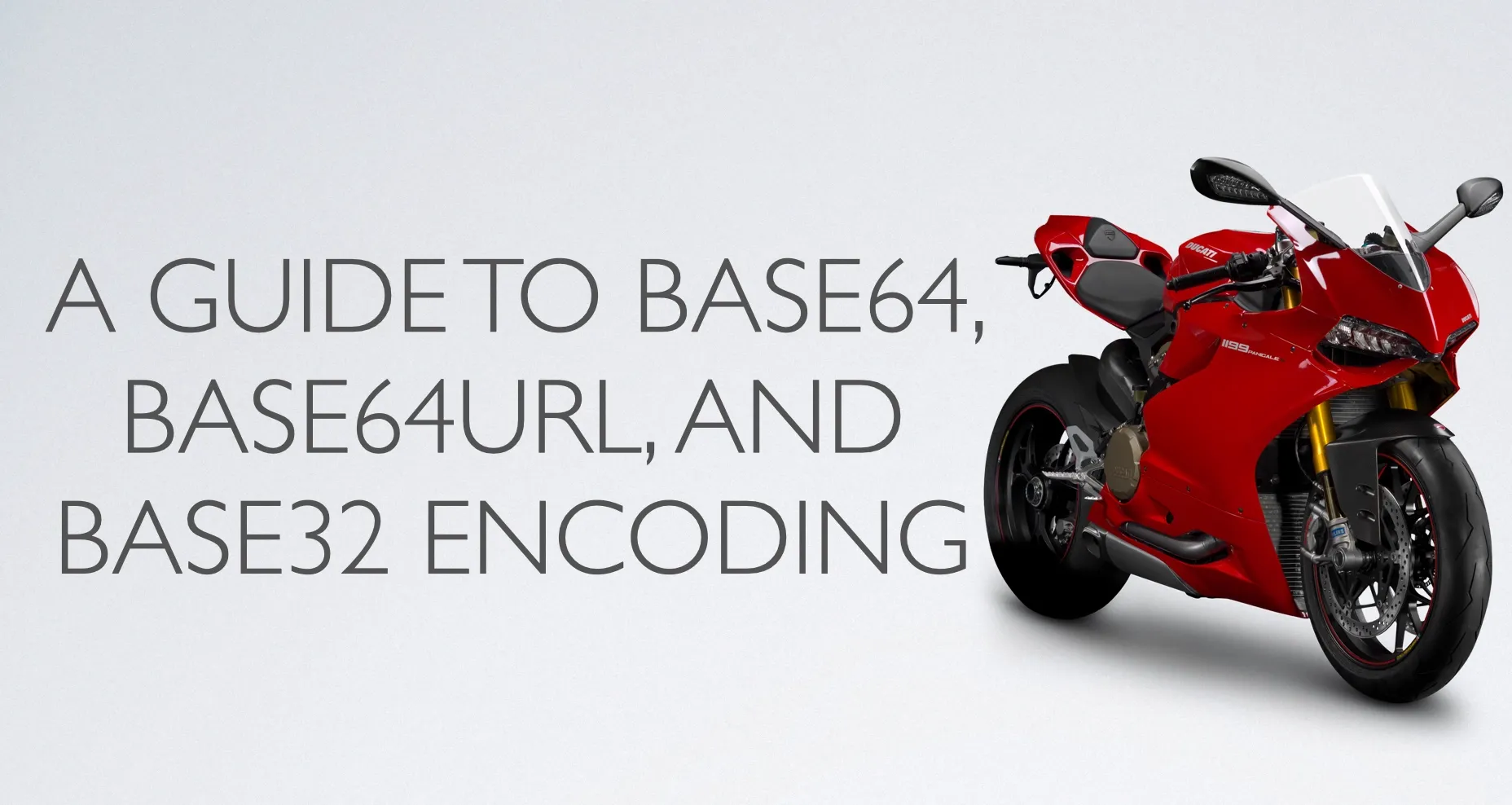
# An Adventurer's Guide to Base64, Base64URL, and Base32 Encoding
Table of Contents
Hey there!
Recently, I encountered some encoding issues. Then I realized that, looks like I haven’t seen any articles give a crispy yet interesting explanation on Base64/Base64URL/Base32 encoding! Ah! I should write one!
So, grab your gear, and let’s decode these fascinating encoding schemes together!
The Enigma of Base64 Encoding
Why do we need Base64?
Imagine you’re sending a beautiful picture postcard through the digital world, but the postal service (the internet, in this case) only handles plain text.
How do you do it?
Enter Base64 encoding – it’s like magic that transforms binary data (like images) into a text format that can easily travel through the internet without getting corrupted.
Base64 takes your binary data and represents it as text using 64 different characters:
-
10 numeric values i.e., 0, 1, 2, 3, …..9.
-
26 Uppercase alphabets i.e., A, B, C, D, …….Z.
-
26 Lowercase alphabets i.e., a, b, c, d, ……..z.
-
Two special characters i.e.,
+,/(typically)
In more details, it will:
-
Grouping Bytes: It groups the input bytes into sets of three, providing 24 bits in total.
-
Dividing Bits: These 24 bits are then divided into four sets of 6 bits each.
-
Mapping to Characters: Each set of 6 bits is mapped to one of 64 characters in the Base64 alphabet (A-Z, a-z, 0-9, +, and /). Since each set is 6 bits, they can represent values from 0 to 63, perfectly matching the 64 characters in the Base64 alphabet.
-
Padding: If the total number of input bytes is not divisible by three, padding characters (typically
=) are added to make the final encoded output length a multiple of four. This ensures that the encoded data can be evenly divided back into its original byte format during decoding.
It’s widely used in email attachments, data URLs in web pages, and anywhere you need to squeeze binary data into text-only zones.
A simple text like “Hello!” when encoded in Base64, turns into “SGVsbG8h”.
Usage of Base64 in Data URIs
Data URIs (Uniform Resource Identifiers) offer a powerful way to embed binary data, such as images, directly into HTML or CSS files, using Base64 encoding. This method eliminates the need for external file references, resulting in fewer HTTP requests and potentially faster page loads. Here’s how it works in practice:
Embedding an Image in HTML Using Data URI
Let’s say you have a small logo or icon that you want to include directly in your HTML page without linking to an external file. You can use Base64 to encode the image and then incorporate it directly into an <img> tag’s src attribute.
Original Image: An image file, logo.png.
Base64 Encoding: Convert logo.png into a Base64-encoded string. The result will be a long text string.
Embed in HTML: Use the encoded string within an <img> tag as follows:
<img src="data:image/png;base64,Base64EncodedStringHere" alt="Logo">Replace Base64EncodedStringHere in above with the actual Base64-encoded string of your image. The data:image/png;base64, part tells the browser that what follows is a Base64-encoded PNG image.
Embedding images directly with Data URIs can reduce the number of HTTP requests, speeding up page loads for small resources.
Navigating the Waters of Base64URL
But, oh, the plot thickens with Base64URL. It’s a close cousin of Base64, tailored for the web.
The twist? It replaces the + and / characters with - and _ to make it URL and filename safe. No more worrying about those characters being misinterpreted as special URL characters or directory paths!
The Expedition to Base32
Then, there’s Base32, another encoding scheme in our adventure.
It’s less compact than Base64 but has its charm, especially when you need to ensure readability and avoid confusion.
Base32 uses a set of 32 characters, making it more resilient against errors like misreading or miswriting.
Base32 shines in specific scenarios, such as encoding email addresses in DNS records for email validation (think SPF records) or in situations where you want to avoid characters that could be altered or misinterpreted.
Why These Encoding Schemes Matter
Why do we bother with all these encoding shenanigans? It’s all about compatibility and safety.
These encoding schemes allow us to safely transmit binary data over mediums that only support text, ensuring that our data arrives intact and unaltered at its destination.
Choosing Your Path
-
Use Base64 when you need a compact, text-based representation of binary data for emails, data URIs, and when integrating with APIs that expect data in this format.
-
Opt for Base64URL when your data needs to be part of URLs or file names, ensuring a smooth and safe journey through the web.
-
Choose Base32 for maximum readability and error resilience, perfect for transmitting data that might be entered manually or when you want to avoid certain problematic characters.
Alternatives and Mysteries Beyond
Our adventure doesn’t end here. There are other encoding schemes like Base58, popularized by Bitcoin, which further reduces the chance of misinterpretation by excluding similar-looking characters. And let’s not forget hexadecimal encoding, a simpler form often used in programming and debugging.
In conclusion, whether you’re encoding treasure maps to share with your fellow digital pirates or simply ensuring that your data travels safely across the vast internet, understanding when and how to use these encoding schemes is an essential skill in the digital world.
Remember, the right encoding at the right time can be the difference between smooth sailing and getting lost in the digital sea.
So, choose wisely!
Until our next digital odyssey, keep exploring and encoding.